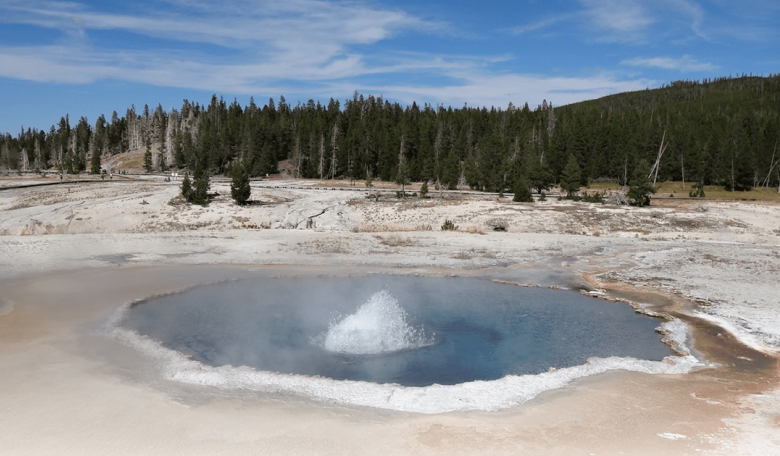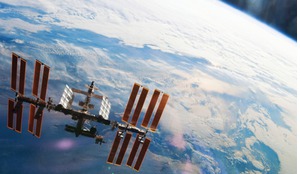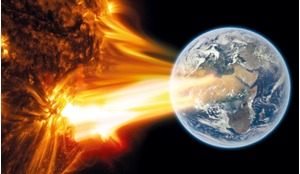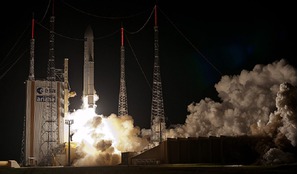For many of you reading this it was probably a fascination with the night sky or the dream of travelling in space that ultimately brought you into the space sector. And, while I hope to go into space one day, it was the call of the unknown that drove and motivated me to where I am today.
Where do we come from? What is our future on Earth and beyond? Are we alone in the universe? These were the questions that were whirling through my head in my mid-teens. I had to make a crucial decision in my life: choose science as my career path and keep my other passions as a hobby (art, languages and diplomacy)? Or choose the ‘practical’ path and keep space as my pastime?
For many years I had been suppressing my love of space exploration and aliens - ever since I first wore an astronaut’s suit as a child. This was due to my parents pushing me towards the latter option, as no one in the family was a scientist and my parents feared for my future if I were to follow my heart. They were also not able to finance my studies at university, especially if I were to study space-related science in the UK or USA. Maybe I would have ended up studying history of art and diplomacy had it not been for extremophiles - organisms that live in extreme environments.
What attracted me the most to extremophiles was that similar life could potentially be found in analogous extreme conditions on other celestial bodies
The night before I had to make the vital decision, my mother recommended I watch the documentary film Aliens of the Deep by James Cameron, as she knew that it would interest me. In the film, a crew of astronauts and scientists discover incredible extremophiles - which looked like aliens - whilst studying the depths of oceans in submersibles.
It was then that I realised we still have much to learn about the limits of life in general - and the chances for extreme life to exist elsewhere in the universe are even higher than what we might think. This was the breaking point. I knew from that moment on that I could not live my life having a ‘normal’ job and suppressing my passions any more.
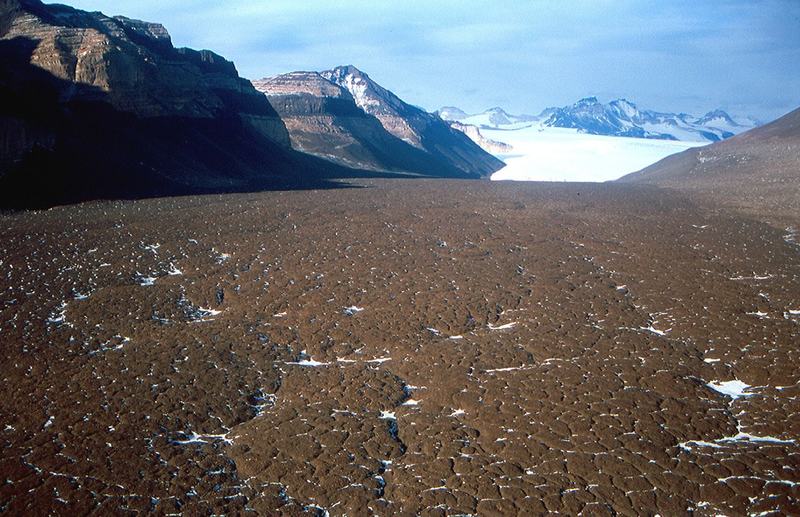 Antarctic dry valley, one of the best analogues on Earth for Mars.
Antarctic dry valley, one of the best analogues on Earth for Mars.
Why did these extremophiles enthral me so? It was not just a Guinness World Record type of fascination for me: to what limits can these exceptional creatures survive in hot, very saline or extremely acidic conditions?
It was because extremophiles had long surpassed what the crew of Starship Enterprise regularly boasts about in Star Trek - that they go where no one has gone before. A famous astrobiologist and one of my role models Lynn Rothschild said, “Alas, scientists have discovered that life on Earth has already done that - and has done so for billions of years.”
Scientists have found extremophiles everywhere on Earth: in the depths of oceans, inside glaciers, toxic caves and even in clouds. Furthermore, the study of extremophiles also has practical applications. For instance, the first extremophiles were discovered nearly 50 years ago in the hot thermal waters (> 80C) of Yellowstone National Park in the United States.
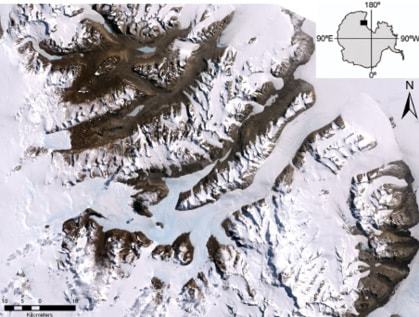 Antarctic Dry Valleys from low Earth orbit based on a NASA Landsat 7 photograph and using ArcGIS software.
Antarctic Dry Valleys from low Earth orbit based on a NASA Landsat 7 photograph and using ArcGIS software.
The invention of the polymerase chain reaction (PCR) using the heat-resistant enzyme Taq DNA polymerase, from the heat-loving extremophile Thermus aquaticus, even won the Nobel Prize. It is considered to be one of the most important enzymes in molecular biology, due to its use during DNA amplification. Enzymes and other biochemical compounds from cold-loving extremophiles can, in turn, be used in the food industry, for example in food storage at low temperatures.
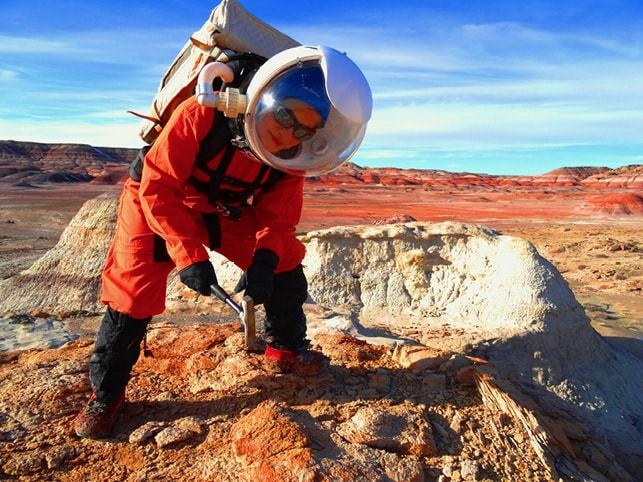 Geology research at the Mars Desert Research Station (MDRS) in Utah, USA.
Geology research at the Mars Desert Research Station (MDRS) in Utah, USA.
However, what attracted me the most to extremophiles was that similar life could potentially be found in analogous extreme conditions on other celestial bodies. Thus, they are very important for astrobiology - a multidisciplinary science exploring the origin and distribution of life within the Universe.
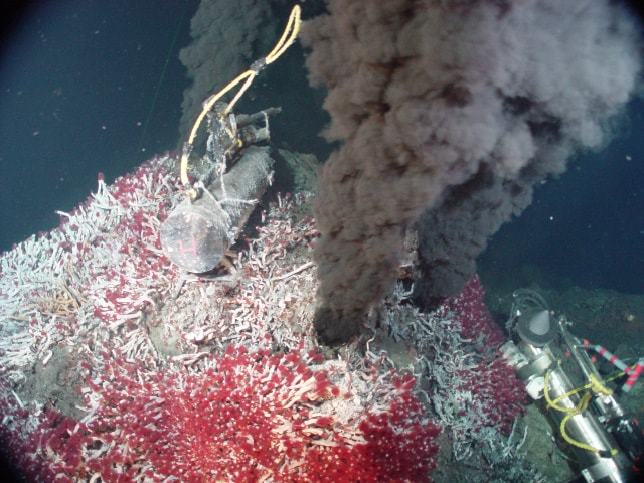 Black smoker Sully in the depths of the Pacific Ocean, surrounded by extremohiles typical of those unique environments.
Black smoker Sully in the depths of the Pacific Ocean, surrounded by extremohiles typical of those unique environments.
When I was a teenager, astrobiology was just starting as a science and it was not really possible to study it at university. So I decided to find my own way. I found that in the UK it was possible to study planetary science - a combination of geology and astrophysics. Universities in the USA where comparable options were offered were more expensive.
Then, I ‘only’ needed to raise enough money to pay for the tuition fees and maintenance costs. I was so determined to go study there that I worked during my high school years each summer and later I had three jobs during my university studies. That was not enough to raise the needed money but in the end I managed it thanks to constantly applying for scholarships, grants and even money from charities.
I paved my own path towards astrobiology research. First I studied planetary science at University College London (UCL) where I learnt about the importance of geology in influencing the possibility of life forming on celestial bodies: from moons like our own giving planets stability and shielding them from asteroid collisions, and liquid inner cores of planets producing magnetic fields that can help shield atmospheres, to geological processes that can make or take away life.
Many years of trying to sterilise and even exterminate microbes that remain in clean rooms has led to the opposite of the desired effect
For instance, giant volcanic eruptions and asteroid impacts are the most likely explanations for many mass extinctions that occurred during Earth’s history. On the other hand, hydrothermal vents, certain sedimentary formations and other geo-chemical environments are considered to be very likely locations for the first forms of life to have emerged.
Likewise, I immersed myself into the astrophysics side of astrobiology research. I worked on several extra-curricular projects at the University of London observatory, where we were using the so-called transit method to identify extra-solar planets orbiting stars beyond our Solar System.
The goal for many scientists has been to try to find planets similar to our own: in terms of size, distance from their star and ideally in terms of atmospheric composition. We were happy that even as students we helped identify a few of them.
Then, I found out about a scholarship programme to cover my study costs at the California Institute of Technology (Caltech), USA, which was ranked the best university in the world at the time. It is there that I was able to add microbiology, environmental science and geobiology to my studies. Furthermore, at Caltech I was able to do hands-on research and Prof John Grotzinger, head of the Mars Science Laboratory mission, was my supervisor for part of this.
Through those projects I was able to work with extremophiles from a huge range of environments for the first time. These included deep sea extremophiles, desert inhabiting extremophiles, and even extremophiles which are able to ‘eat’ cleaning products.
Many people think that when you buy a cleaning product it will kill almost 100 per cent of all the microbes and other types of germs present in your household. But the irony is that there are many microorganisms which can actually ‘feed’ off of substances in those products. Therefore, we may think that we made the whole house sparkling clean but in some cases we have actually created a breeding ground for extremophiles.
They are not only able to live ‘happily’ on glacier surfaces with almost no nutrients, extreme temperatures and strong radiation doses - they actually thrive there
In fact, this type of research was what got me into NASA’s Jet Propulsion Laboratory (JPL), where I worked as a visiting researcher. As soon as I found out that there are researchers there studying extremophiles with applications to astrobiology, I knew I had to find a way to collaborate with them. I contacted them and repeatedly suggested several types of projects that we could work on. After seeing how enthusiastic I was, they were convinced to take me on board. However, at the time it wasn’t possible to work at JPL as an international student - so we had to find another way.
It took over six months to write the project, find the funding and get the correct permits - but it worked out in the end! My project was in the field of planetary protection, which focuses on minimising the potential of (one) forward contamination of other celestial bodies by viable terrestrial organisms, as well as (two) the back-contamination of Earth by extraterrestrial life-forms.
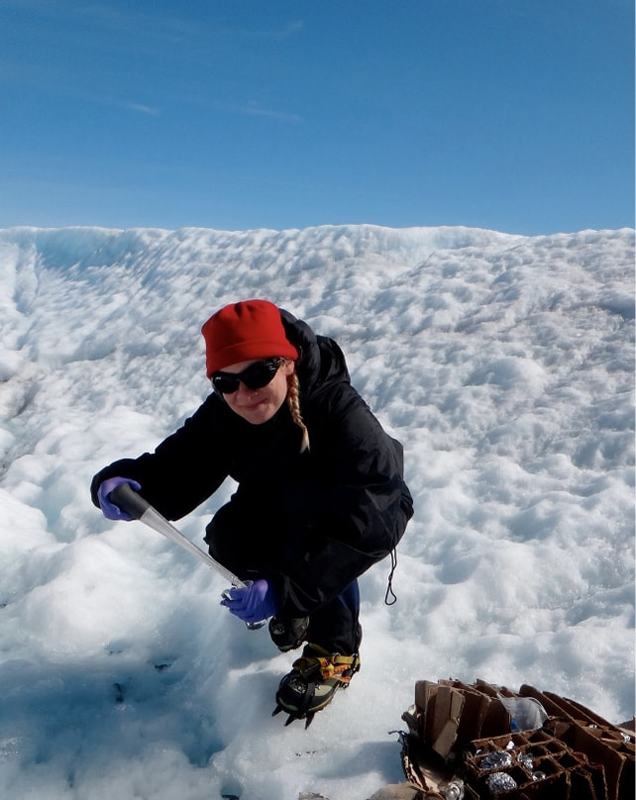
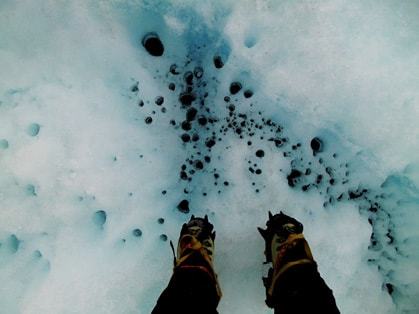 The author undertaking field work in Greenland.
The author undertaking field work in Greenland.
Unfortunately, I found that there are many extremophiles, which could survive the journey all the way to Mars, the landing and even the conditions on the Martian surface. The worst part is that these types of microbes are found in so-called ‘clean rooms’, super clean facilities in space-related laboratories, where probes, rovers and spacecraft are prepared prior to being launched into space.
It is in these rooms that the greatest planetary protection efforts are put in place in order to make sure that only a very minimal amount of microorganisms and other biological material, if any, is transported away from Earth. The problem is that many years of trying to sterilise and even exterminate microbes that remain in those rooms (using various cleaning methods, such as the before-mentioned cleaning agents, plus radiation, etc.) has led to the opposite of the desired effect: scientists accidentally ended up ‘breeding’ a number of very resistant extremophilic mutants.
Indeed, life does always seem to find a way to survive and these clean-room microbes are able to adapt to many of the methods scientists were trying to use to kill them with. Hence, extremophiles present us with more irony: we astrobiologists are trying to find life on Mars, yet perhaps we ourselves brought life to Mars through all of the previous missions that have been on its surface. Even I contaminated Mars myself in a way. While at JPl, I added my signature into the Curiosity rover, currently still exploring the planet.
After those research experiences I was hooked. I designed my master’s project at UCL to be centred on the extremophile aspect of astrobiology: this time on extreme cold, radiation and desiccation-resistant microorganisms.
These types of extremophiles could potentially exist on Mars even today. My samples were from the Antarctic Dry Valleys, which are considered to be one of the best analogues for Mars on Earth. This research then earned me a scholarship and research grant for my PhD at the University of Bristol in the UK, focusing on how extremophiles can survive living in ice.
They could be analogues for the kind of life that could exist within the ice or below the surface ice cover of the icy moons of Jupiter for example. I was again very surprised by the endurance of these extraordinary creatures. They are not only able to live ‘happily’ on glacier surfaces with almost no nutrients, extreme temperatures and strong radiation doses - they actually thrive there.
Extremophiles could potentially be used for fertilising nutrientdeprived soils on Earth and even on Mars one day
I took part in multiple expeditions to these unique environments and I discovered that in Greenland, for instance, the extremophiles are capable of producing enough nutrients to feed all of the surrounding ecosystems. It is this discovery that inspired me to propose an experiment for the Mars Desert Research Station (MDRS) in Utah, USA.
It was focused on ‘terraforming’ - recreating Earth-like conditions - in the simulated Martian desert. I was chosen to be part of the UK crew of ‘Marsonauts’ at MDRS as well. My experiment was successful: extremophiles could potentially be used for fertilising nutrient-deprived soils on Earth and even on Mars one day.
 The first Slovak satellite, SkCube.
The first Slovak satellite, SkCube.
My quest following extreme life in search of answers to astrobiological questions did not end there. After my PhD, I spent some time at the International Space University and as a consultant for NewSpace companies before returning to my home country Slovakia. There I was eventually elected chair of the Slovak Organisation for Space Activities (SOSA), which designed and constructed the first Slovak satellite, SkCube.
SOSA is now exploring new fields of astrobiology research: searching for terrestrial or alien life in the stratosphere, possibly even in space using CubeSats. Ultimately, I hope to be able to answer some of the intriguing questions that introduced me into astrobiology as a teenager - and thus contribute directly to astrobiology’s mission to understand the origin, evolution and the future of life in the universe.
Dr Michaela Musilova is the Chair of the Slovak Organisation for Space Activities (SOSA), a visiting lecturer for the International Space University and senior research adviser for Mission Control Space Services Inc. In Slovakia she is working to raise the country’s space research and industry profile, developing SOSA’s international collaborations and help create a Slovak space research centre.





